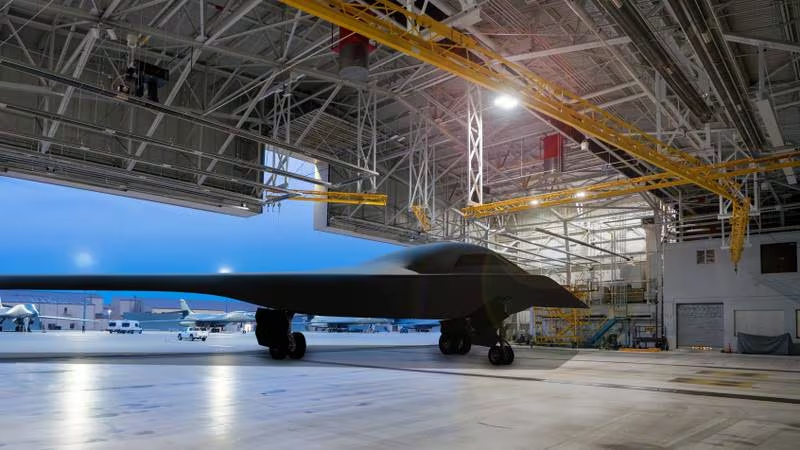
The United States Air Force’s newest stealth bomber, the B-21 Raider, emerges amidst escalating geopolitical tensions and competitive threats from Russia.

The Raider is designed to replace the Air Force’s aging bomber fleet, including the B-1 Lancer, B-2 Spirit, and the venerable B-52 Stratofortress.

It represents a leap forward in the U.S.’s strategic deterrence capabilities, combining advanced stealth technology with the ability to deliver both conventional and nuclear payloads.

Despite successful negotiations with Northrop Grumman leading to lower unit costs, concerns persist over the quantity of B-21 Raiders that will enter service by 2030.

With today’s bomber fleet at its smallest in history, the issue is not just about technological supremacy, but also about the numbers.

Budget constraints present a significant challenge to increasing the fleet size.

“I’ve seen programs get into trouble because there was too much focus on the platform and not enough on all the things that are necessary to support it,” Air Force Secretary Frank Kendall said. “Hopefully, we will have avoided that in the case of the B-21.”

The B-21 is not only seen as a means of strengthening U.S. strategic forces but also as a catalyst for adversaries to invest heavily in countermeasures, which could shift the balance of power.

The Raider program’s significance extends beyond sheer numbers. The platform is envisioned to perform various roles, including intelligence collection, interception, and battle management.

Its flying wing design, reminiscent of the B-2, contributes to a reduced radar cross-section and enhanced stealth characteristics.

Equipped with sixth-generation technology, the B-21 will feature an open architecture allowing for quick technological updates.

This progress comes at a time when the Air Force’s modernization efforts are critical.

Other parts of the nuclear triad, like the LGM-35A Sentinel ICBM, are experiencing cost overruns, and while the B-21’s costs have been managed, the pressure to deliver a viable fleet remains high.

The U.S. must ensure it can maintain air superiority, a task made more complex by the need to balance its aging fleet’s gradual phase-out with the introduction of the B-21s.

The Air Force Secretary assures that attention is being paid to comprehensive program planning, including training, facilities, and maintenance, alongside platform development.
Relevant articles:
– The U.S. Air Force’s B-21 Raider Problem Gives Me the Chills, The National Interest
– US Air Force reports lower B-21 costs after negotiations with Northrop, defensenews.com
– The Air Force’s B-21 Raider Bomber Nightmare Is a Math Problem, The National Interest
– Air Force Says It Is Not Aware of B-21 Quality Problems Linked to Spirit AeroSystems, Air & Space Forces Magazine

